How do you do sustainability at a wave pool? The LineUp at Wai Kai example
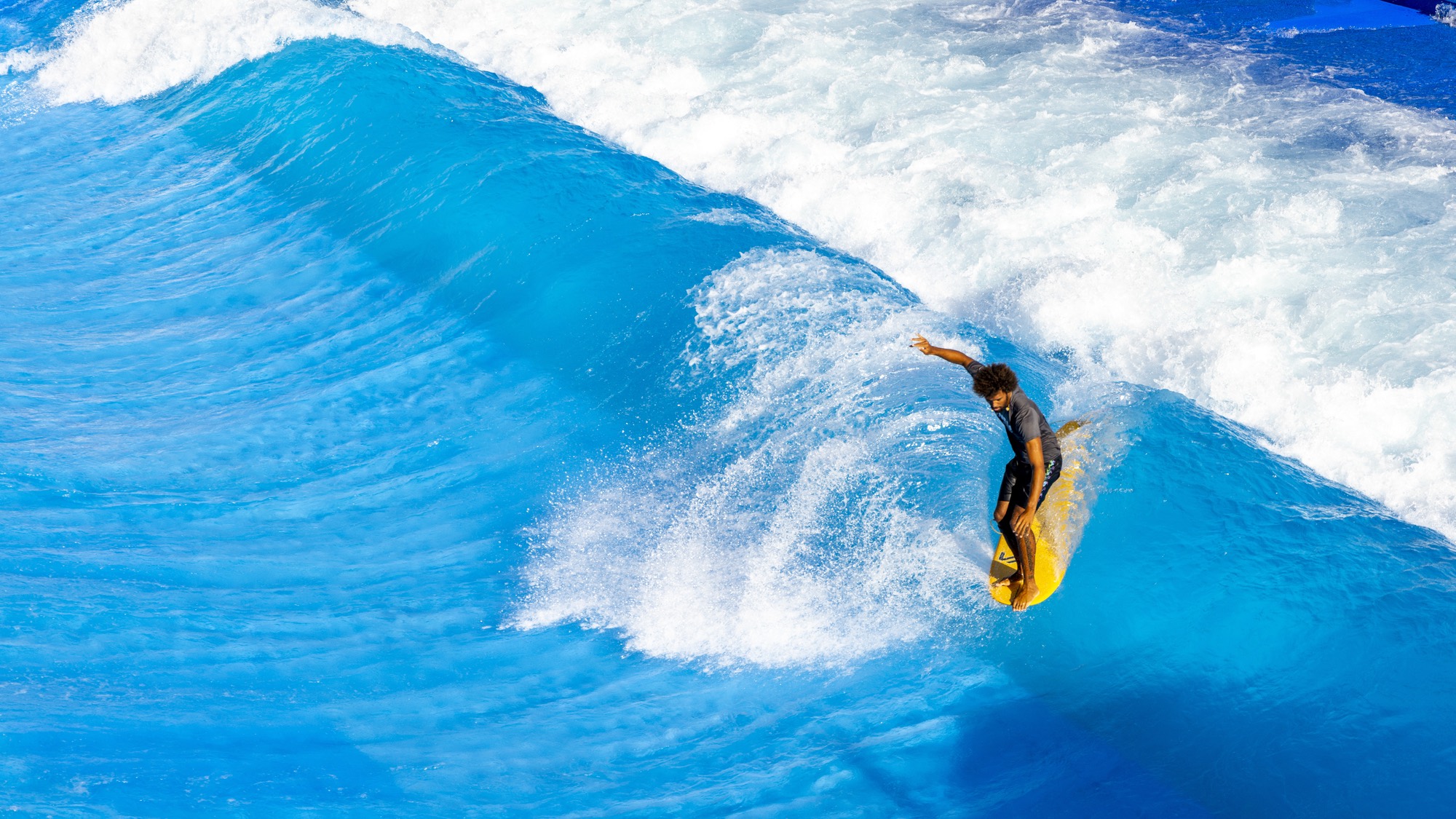
What makes a wave pool “green”? With surf park development speeding up around the globe it’s only natural for questions about environmental impact to come up. How can wave pools become more sustainable? What practices are they implementing to mitigate their carbon footprint? And why are wave pools so highly scrutinized compared to other similar energy and water users?
To answer all these questions and more we got in touch with Skip Taylor, a Partner and Management Consultant at Surf Park Management, which manages The LineUp at Wai Kai in Oahu. Taylor provided details on the cutting-edge sustainability measures and goals of their newly launched static wave, the challenges of going green, and insight into the wave pool sector as a whole.
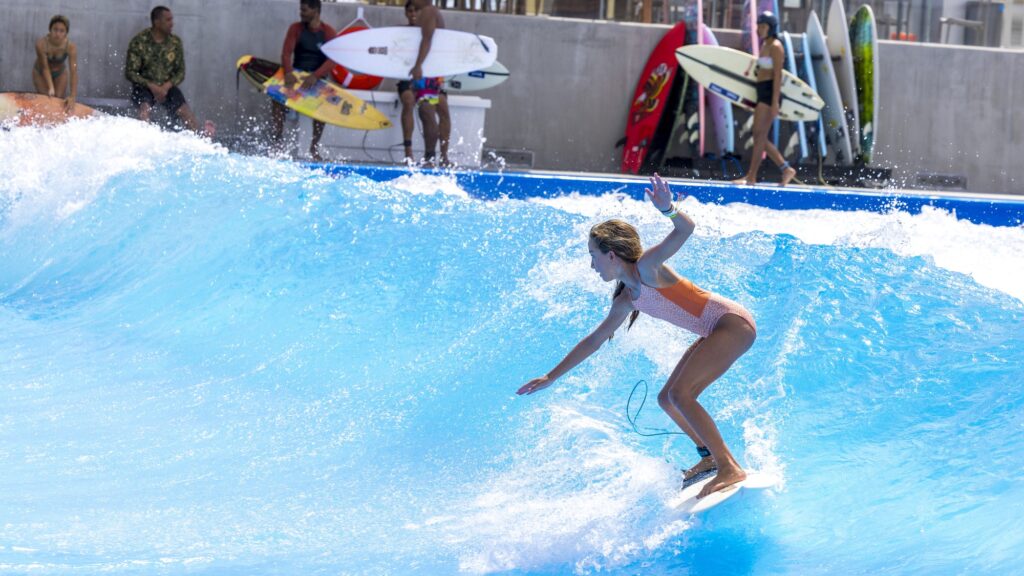
So let’s talk about sustainability at the LineUp. First off, what kind of rep do you think wave pools and surf parks have as far as sustainability?
It’s probably one of the more negative issues in the consumer world to bring a surf park online within different communities. The perception is that these are a monstrous waste of water and user of energy.
Can you put that into perspective for us?
The perspective is on water usage, especially with us using 1.2 million gallons a year. A mid-to-large restaurant uses about 5 million gallons a year. A golf course uses 100 to 200 million gallons a year. So it’s a visual thing. When people see green grass and landscaping it doesn’t always register the water needed to maintain that. When you go to a restaurant, most people don’t know that 5 million gallons of water is being used a year to operate. It’s interesting to always put it in perspective.
Let’s talk about our power usage. What are you doing at The LineUp in regard to power compared to other surf parks? How do surf parks get a bad rep for power?
The different technologies out there have different power usage. Although we’re a smaller water user, we’re a higher energy user than a Wavegarden Cove. We recognize our power usage is not ideal. We explored looking at abilities to do solar, but it doesn’t pencil out for the size of the development that we have right now with the footprint that we’re able to work with. There just wasn’t enough land for the size of solar to generate the power we needed but our owners are open to consider this in the future. So what we chose to do is work with HECO, the Hawaiian Electric Company. There’s a 2.5GW storage facility just up the road here in Kapolei that just is coming online right now as part of HECO’s commitment to becoming 75% carbon neutral by 2030 and 100% by 2045. We will work with their systems as we’re on their grid and embrace their attempts to go to sustainability. But at the same time, we recognize that’s still not good enough, not even a beginning really. It’s just us hooking up to the grid.
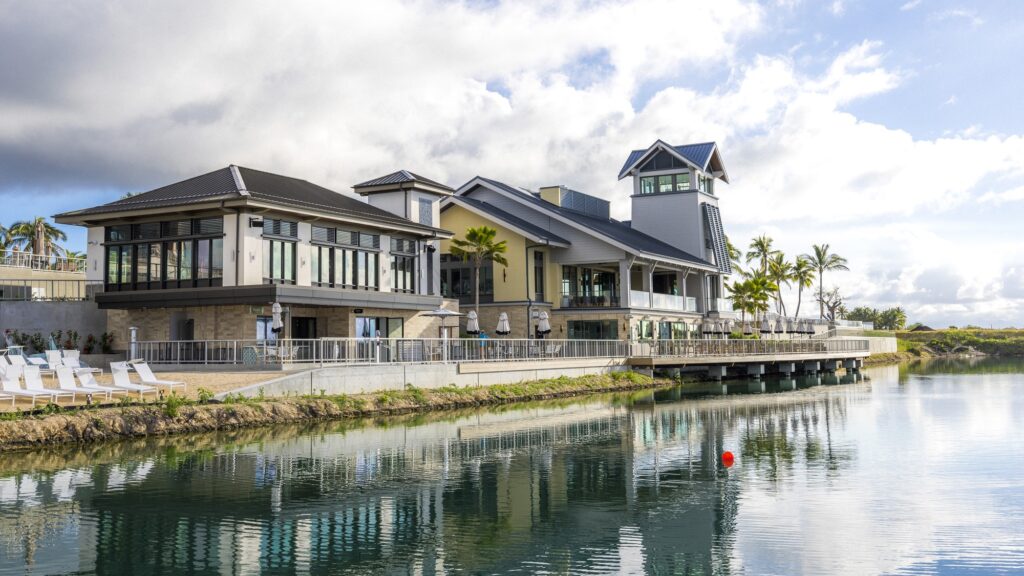
So you are buying into HECO just up the street, but do you have options? Can you choose to integrate green energy?
It’s just coming on board right now so no we don’t. In Hawaii, they’re making transitions, especially in this region. I know in other regions you can choose to use green energy at a slightly higher rate than non-green energy. They haven’t created that option yet because this facility is literally just coming online. It’s just about to be fully launched.
And what is that run on? Is that solar or hydro?
I believe they draw on all the solar of the region and can aggregate the excess production during the daytime and then store it through the night. There’s a lot of solar around. There’s a solar farm right here on the side of the hill above Kapolei. So there are some big steps being taken towards getting Hawaii off the coal burning, fuel burning, and garbage burning that has been prevalent. And if we’re aligning with HECO and their goals, that hopefully will see them take those steps that need to be done for the whole state of Hawaii and bring this place into a much more sustainable setting.
But let’s go back to power. We recognize that just saying we’re on the grid is not even an answer. We have also made the choice to eradicate our carbon footprint completely and we are working with the sustainable surf group that has their SeaTrees program. And we’re buying sea trees, carbon credits and their tokens for their carbon credits. Each single token offset will sequester one ton of CO2 emissions. So we are buying and doing a program for everyone who does an activity here. One dollar of their activity is going towards the SeaTrees program. They do their carbon offsets by working with ecosystem watershed restoration around the globe. They do everything from coral restoration, to kelp forest restoration, and work with mangroves. We’ve asked that our carbon offset dollars work specifically in Hawaii to help programs here. (An overview of The LineUp’s Sustainability measures can be found at this link.)
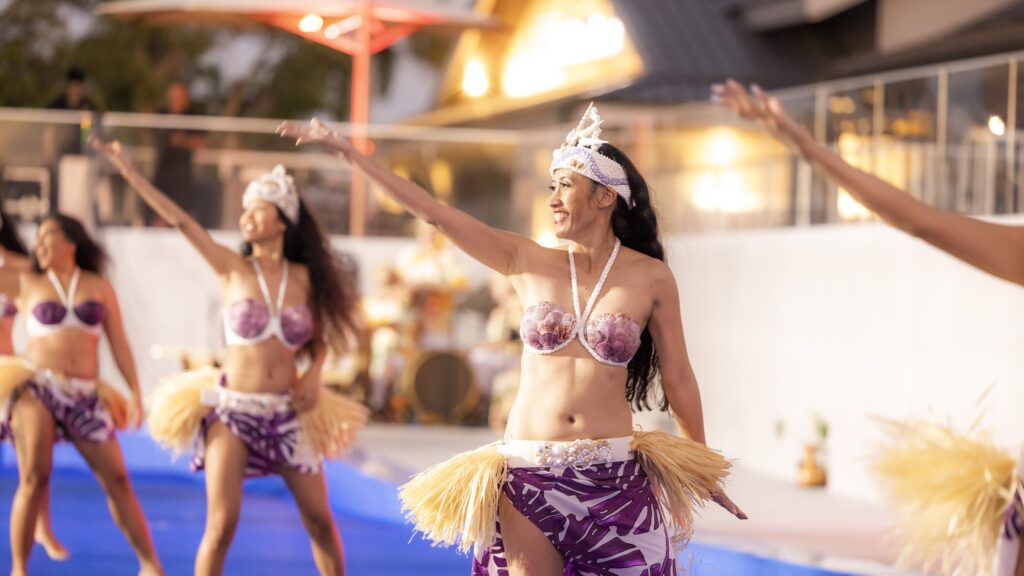
How much of a barrier was that to be ecologically responsible in terms of buying credits?
It impacts the bottom line, so it’s a big deal for us to convince the ownership group to forfeit bottom-line profit. Putting money toward a carbon offset is a big achievement. You know, money controls a lot of business decisions. These projects have to be profitable. But in terms of what in Hawaii we say being ‘Pono’, or doing things in the right way is also very important and we were able to convince the owners and the developers here and we try to seek that at any of the projects we’re working with. We have to be sustainability-conscious. And I think it was really interesting at the Surf Park Summit this year showing the research data that guests are willing to pay more, and would choose a sustainably-operated venue over a non-sustainably-operated venue.
But power is one element. There’s a whole sustainability operation. We’re also working with Stoke Certified and the sustainable tourism group that Jess Ponting has run with Carl Kish and their team. So as we were planning and building, we were keeping in mind who our vendors are. Right from the very beginning, we had sustainability practices in mind. We’re not a Stoke-certified resort yet because we’ve just opened, but we are benchmarked. What happens now is that after we get through a few months of operation, the Stoke team will come out here to work through the certification process. And if we hit there, I think it’s an 80% threshold on their criteria, then we become certified. It’s very thorough. It goes down to community work, employment practices – it’s more than just using a recycling container. It’s a full-cycle sustainability model that they look at.
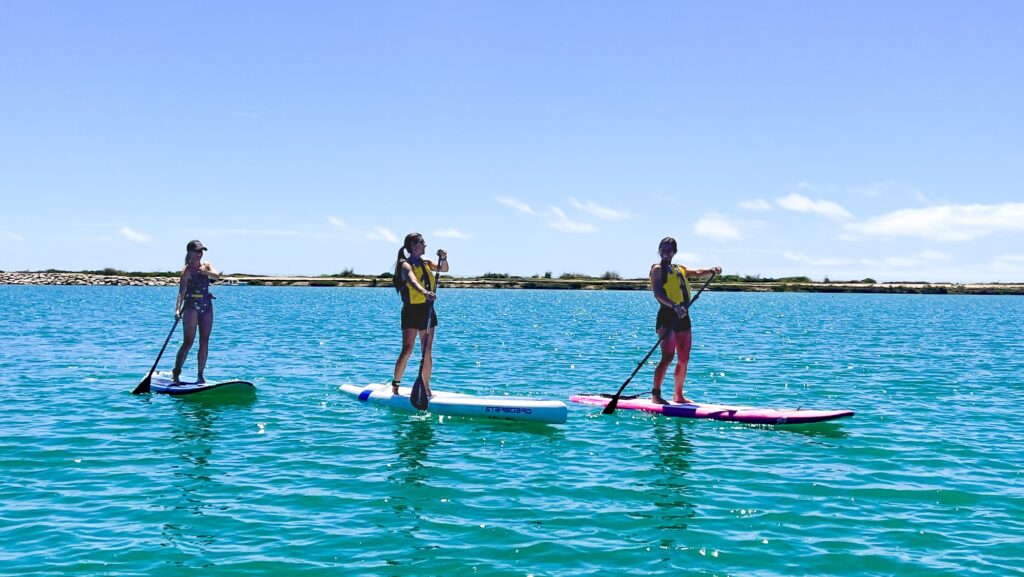
I was in another U.S. state recently and my coffee came in a Styrofoam cup. I got a plastic straw at lunch, and they gave me plastic bags at the supermarket. So that’s an example of states without much environmental regulation, right? Some wave pool projects in these states don’t have to live up to these expectations. How big of a role did Hawaii play in your decision to pursue this path?
I think we’re trying to jump way ahead of the state rules. They’re the slowest. They’re government bureaucracy. They talk about these things and they say ten years from now there’ll be no single-use plastics. They don’t say tomorrow. We came into this venue and we immediately said, no single-use plastics. All our vendors and all our suppliers find out we don’t use single-use plastics and they cringe a little bit, but we say, sorry. We’ve turned down events here. Someone wanted to run a biathlon/triathlon event and do the swimming with us. But they didn’t want to not have bottles of Gatorade and plastic bottles all over the place. And we said, sorry, we’re not your venue. That hurts our bottom line, but we think in the long run it will help us by staying true to our word.
It’s a big deal not being able to sell a plastic bottle of water. So we’ve partnered with people like Maranello for the water bottles and we’ve worked with Maranello on selling water in a recyclable and reusable aluminum container. We put all our beers and sodas on taps and lines. We don’t sell packaged goods. If it’s given to you in a cup, it’s either a washable cup that we reuse or it’s a plant-based cup. We found a great Hawaiian supplier who works in a fully compostable ecosystem. If you ordered food from the Lookout bar and grill upstairs, you would be able to get a whole package that you could all put in the compost. That’s not mandated in the state yet. We’re doing that on our own and it costs us more. The packaging costs more than buying cheap plastic stuff, but we’re trying to set a tone and make sure we act on it.
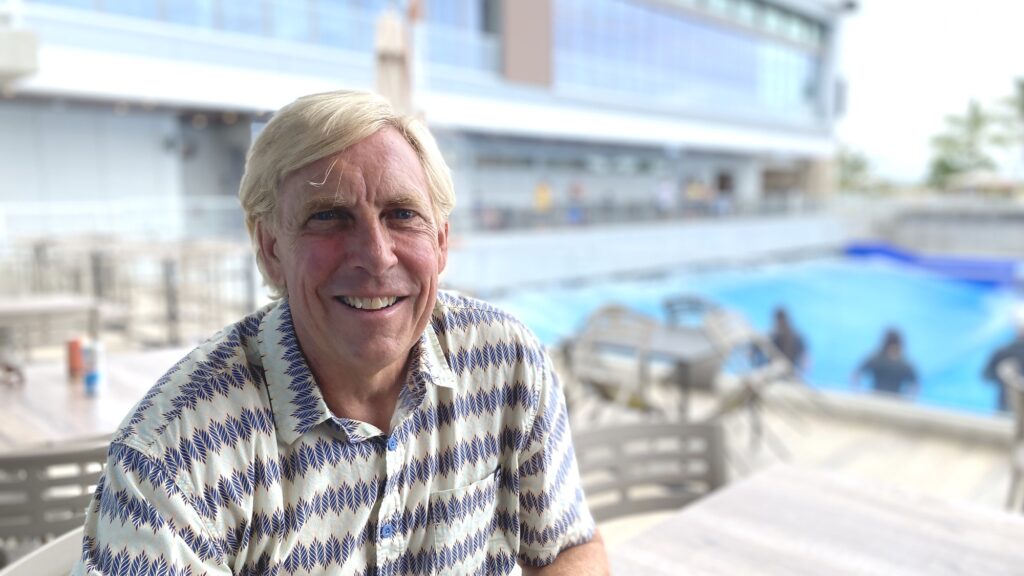
I’ve heard analogies, like an ice skating rink and a wave pool are similar in energy use and carbon footprint. But what is it about surfing that makes people act more responsibly in terms of the environment, compared to, say, hockey players?
Yeah, it’s a great question. I love that one. I think it is because hockey rinks have been around forever. We’re the new kid on the block and we’re an easy target. I think that people accept community swimming pools that use as much water, or more water, in some cases. Nobody ever complains about a giant Olympic swimming pool being built. And an ice rink, the same thing. They got water and power that they’re using and they’re cooling and refrigerating. I just think it’s been going on forever and people kind of accept that as a community benefit. And I think surf parks might get challenged because people say, why don’t you just go to the ocean and surf? It’s there naturally, whereas most of the world’s ice rinks aren’t there naturally.
What else are you proud of here at Wai Kai?
One of the things we do that’s pretty cool is that we work with the ocean-friendly restaurant mandate. We only buy ocean-wise products for all our fish and seafood. We work with organic local farms as much as possible. There are issues where you can’t get products through the supply chain, so we do have to get stuff from the mainland once in a while. But organic, local, sustainable is what we’re doing. When Kelly Slater was here surfing, he was stoked to see that his Outerknown line is here, which is famous for being at the highest standard of sustainability practices. And if we buy from a brand like a RVCA or a Vissla, we’re going to buy from their recycled/upcycled boardshort lines. We’re not going to buy the rest of the line. So we’re very conscious of our purchasing in all areas, whether it be food and beverage or retail. And I think that really completes the ecosystem for us, that it isn’t just lip service. We really want to walk the walk and be the best possible corporate citizens we can be in the community. What’s really interesting in Hawaii is that they’ve been slower to the sustainability practices in many ways. If you go to many restaurants and places, there’s no recycling even available. You get a to-go package and it’s all in plastic. And I find when I’m back on the mainland, I go to these cool takeout restaurants and everything’s in compostable takeaway stuff. I just don’t see that as much in Hawaii. But what I find is all our employees and all the people at work here, if we’re doing sustainability right, they get to be educated and see how things should be done. Then they have an effect on the community – they take that home with them. They teach their family, their kids, their friends and hopefully we have a ripple effect. I look at us as trying to not only be doing the right things here, but trying to help teach our staff and our employees to take that out to the community as well.
Related Coverage
